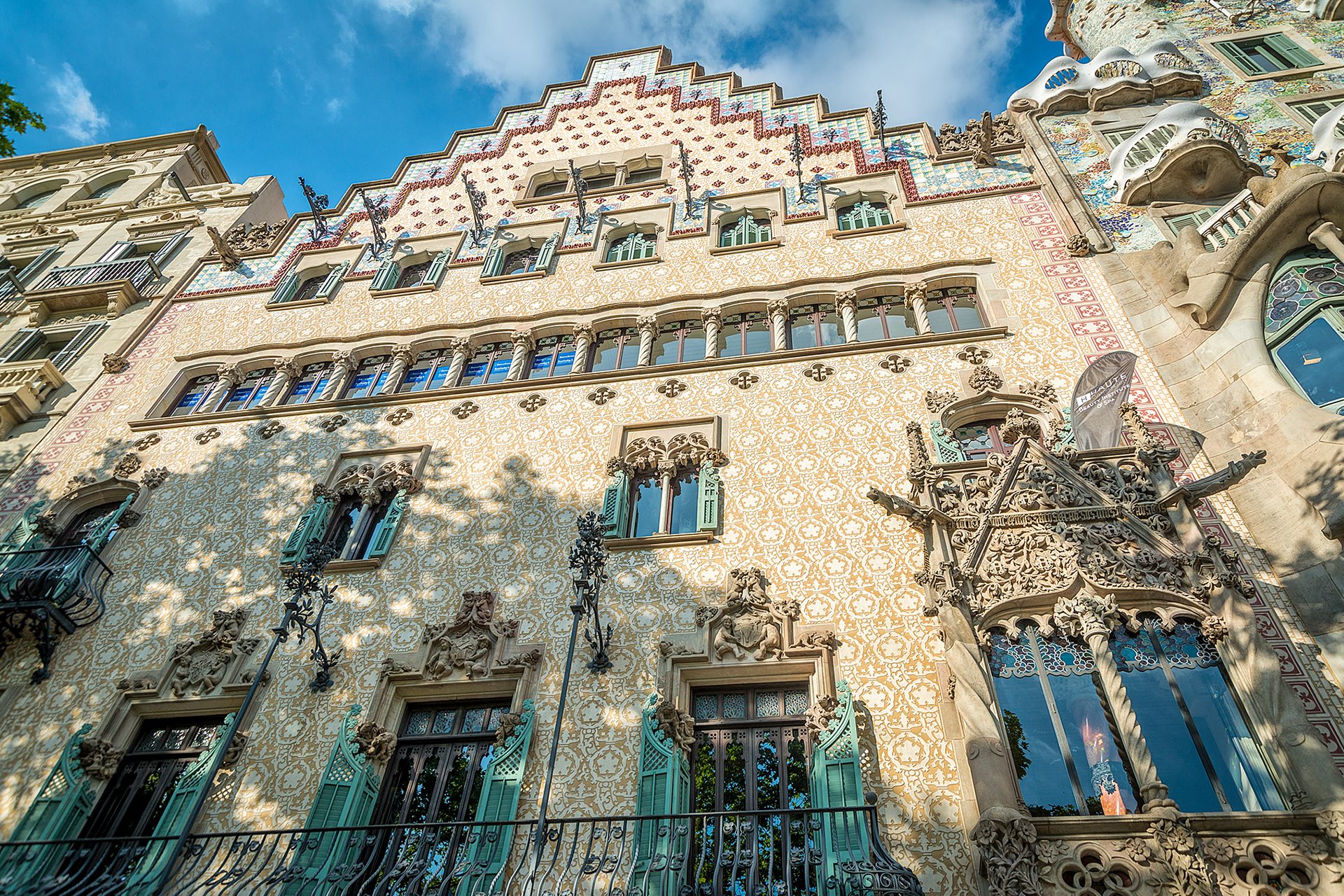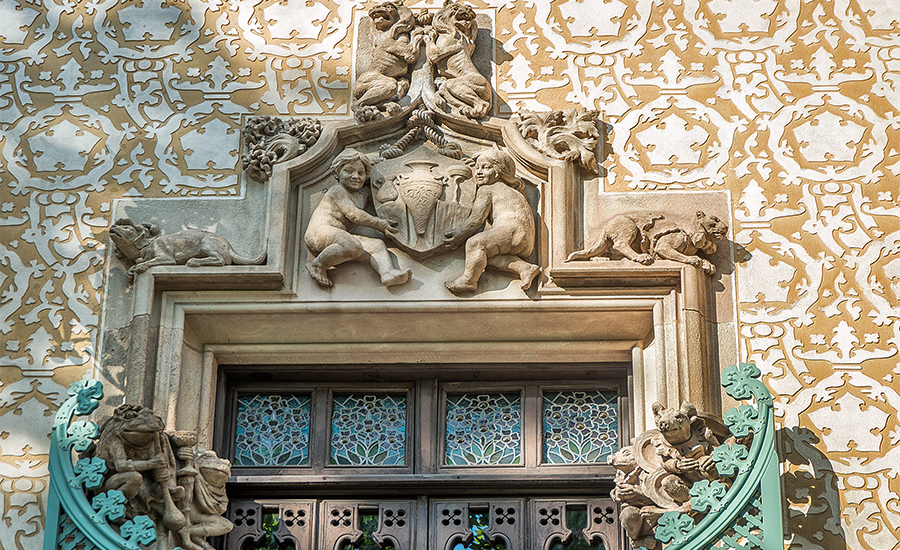This website uses cookies so that we can provide you with the best user experience possible. Cookie information is stored in your browser and performs functions such as recognising you when you return to our website and helping our team to understand which sections of the website you find most interesting and useful.
Casa Amatller: Chocolate Tradition & Flemish Architecture

If there is a building that never goes unnoticed in Passeig de Gràcia in Barcelona, that is Casa Amatller. For a moment, you will feel like you are in a backstreet of a village in the Netherlands, due to the architecture of the facade. Its triangular and staggered design is very reminiscent of the urban physiognomy of Northern Europe. But there’s more, because Casa Amatller holds inside a chocolate tradition that few European companies can surpass. Declared a Cultural Asset of National Interest, it is worth stopping at Passeig de Gràcia 41 for a moment to admire Casa Amatller in all its splendor.er.
Casa Amatller’s History
In the group of modernist buildings installed in the emblematic Passeig de Gràcia, there are several that shine more brightly than the rest. One of them is, without any doubt, the Casa Amatller. It is a member of what is known as the Apple of Discord, a stretch of Barcelona’s Passeig de Gràcia that is home to several buildings by renowned Catalan architects. In this dispute to stand out from the rest, stands the Casa Amatller, inspired by the architectural style of northern Europe.
It bears the signature of the architect Josep Puig i Cadafalch, whose mission was to adapt an old building to meet the requirements of the master chocolatier Antoni Amatller i Costa. This commission was carried out between 1898 and 1900 and the result was a building in the Catalan Gothic style with influences of Flemish architecture.

Its triangular stepped design façade is very striking, especially for the multiple elements that compose it. The ceramic tiles are dedicated to enhance it. It is inevitable that the view goes to the main balcony formed by three doors full of ornaments. At a glance at the detail, it is possible to observe four characters that emulate the arts: painting, music, architecture and sculpture. The figure of Sant Jordi, patron saint of Catalonia, could not be missing.
From a single-family mansion to the Institute of Hispanic Art
The chocolate tradition can be perceived in many corners of this building. In fact, the first Chocolates Amatller factory, whose owner lived here, opened its doors in the 1840s and produced more than 10,000 kg of chocolate per day.
References to this trade appear in the lobby. The main staircase is adorned with sculptural elements linked to chocolate production, while in the family room there are nods to the cocoa trade between America and Europe.

Since 1960, this building has housed the headquarters of the Amatller Institute of Hispanic Art. It has a library collection of more than 30,000 titles related to the history of Spanish art and a photo library with nearly 360,000 images.
The Institute shares space with the Amatller House Museum, which offers a guided tour of this former single-family mansion with original furniture and decoration. The visit is accompanied by a cup of chocolate of this legendary brand that, since the 70s, belongs to the company Chocolates Simón Coll.


